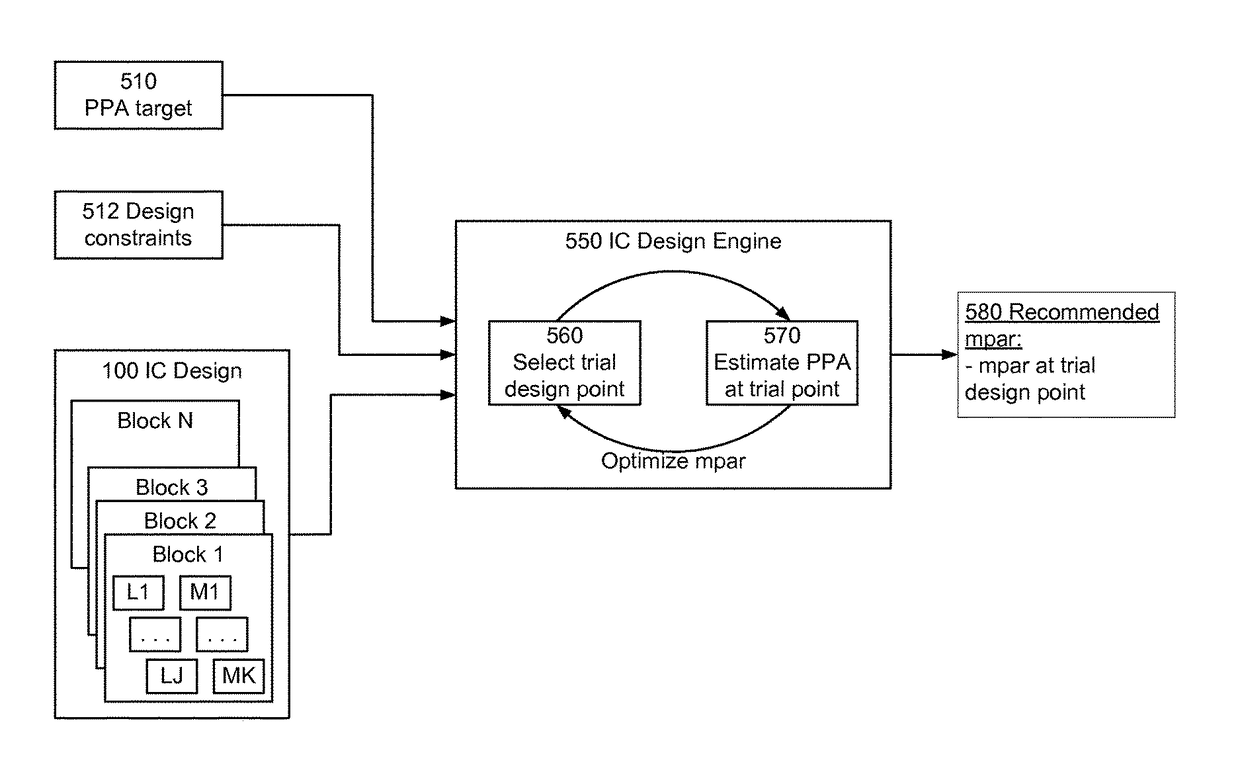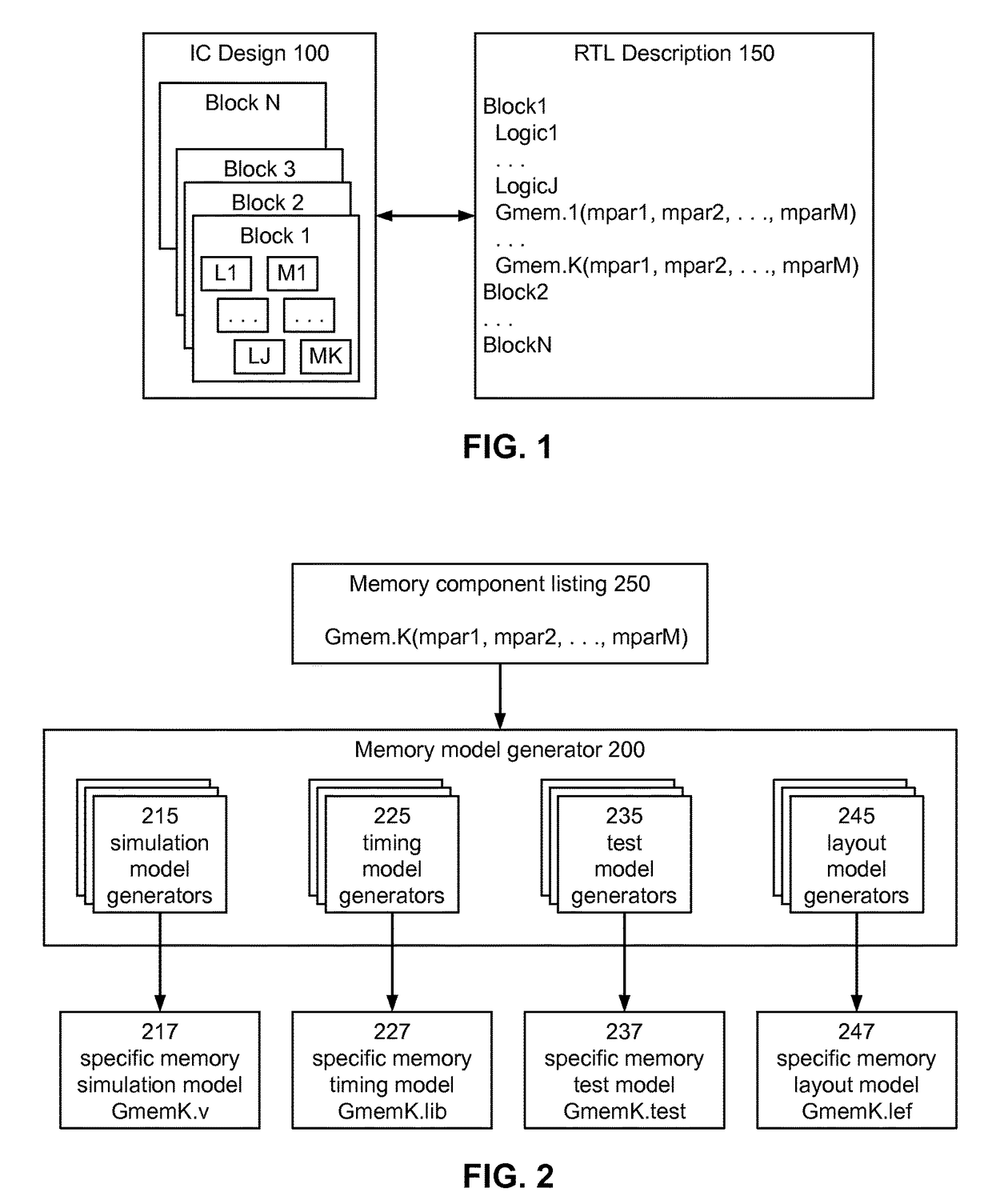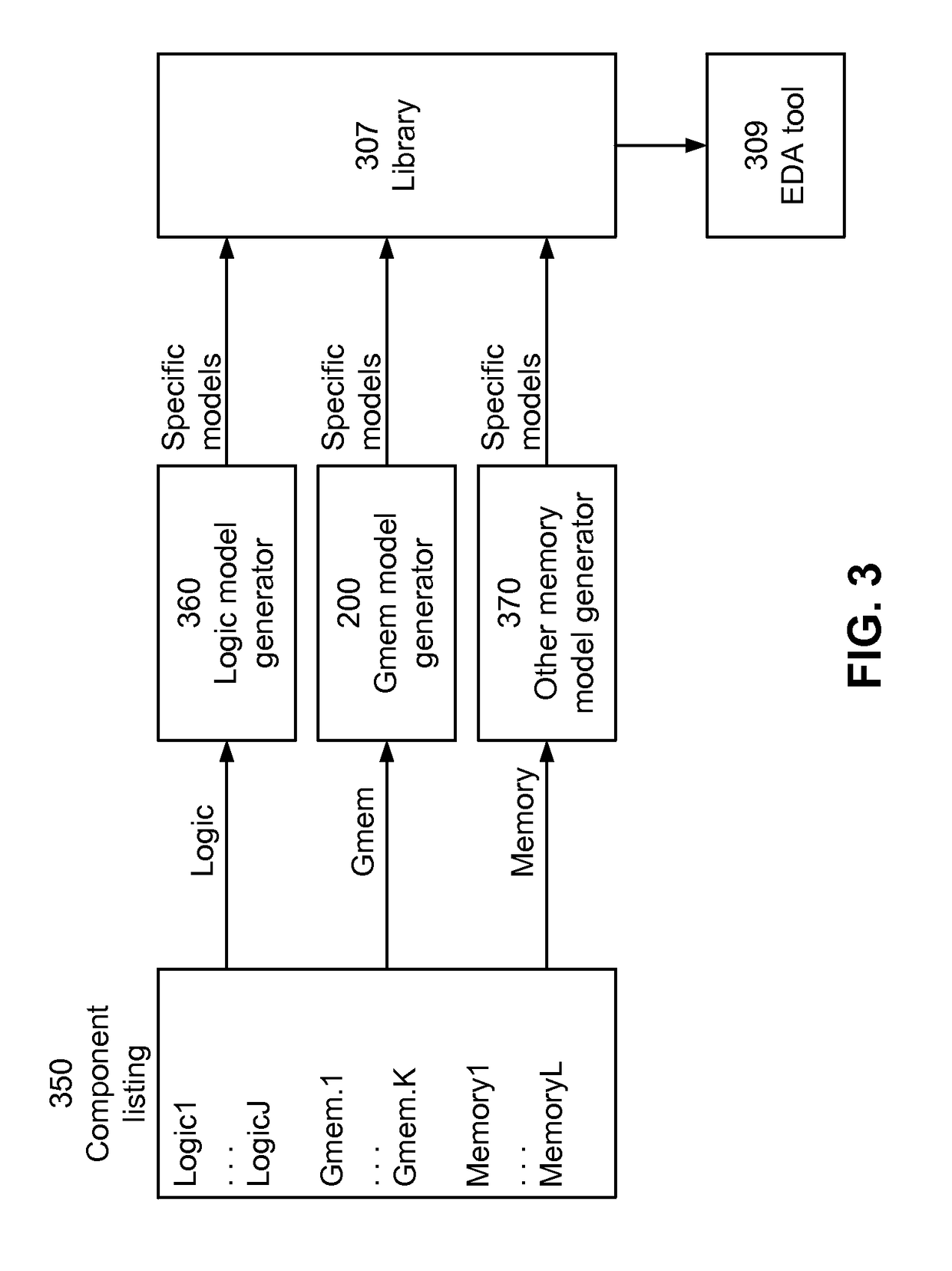Memory optimization in VLSI design using generic memory models
a memory optimization and memory model technology, applied in the field of memory optimization, can solve the problems of memory consuming a significant portion of the power of the soc, increasing the complexity of the integrated circuit and its design, and costing millions of dollars
- Summary
- Abstract
- Description
- Claims
- Application Information
AI Technical Summary
Benefits of technology
Problems solved by technology
Method used
Image
Examples
Embodiment Construction
[0018]FIG. 1 is a block diagram illustrating a register transfer level (RTL) description of an integrated circuit (IC) design, according to one embodiment. FIG. 1 shows an IC design 100 on the left hand side and its equivalent RTL description 150 on the right hand side. The IC design is a design that a user desires to optimize, including typically for power, performance, and area (PPA) metrics. In one embodiment, the IC design is a design for a system-on-chip (SoC). The IC design includes multiple blocks, for example, blocks 1 through N. Each block includes circuit components, including logic components, for example L1 through LJ for block 1, and memory components, for example M1 through MK for block 1.
[0019]The RTL description 150 is an RTL description of the IC design 100. The RTL description is typically created using hardware description languages such as VHDL or Verilog. The RTL description for the IC design includes RTL descriptions for each block of the IC design and each log...
PUM
 Login to View More
Login to View More Abstract
Description
Claims
Application Information
 Login to View More
Login to View More - R&D
- Intellectual Property
- Life Sciences
- Materials
- Tech Scout
- Unparalleled Data Quality
- Higher Quality Content
- 60% Fewer Hallucinations
Browse by: Latest US Patents, China's latest patents, Technical Efficacy Thesaurus, Application Domain, Technology Topic, Popular Technical Reports.
© 2025 PatSnap. All rights reserved.Legal|Privacy policy|Modern Slavery Act Transparency Statement|Sitemap|About US| Contact US: help@patsnap.com



